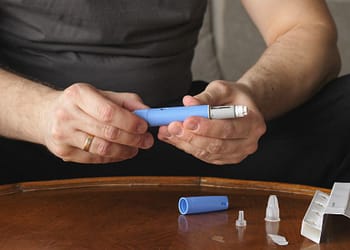- Cough, Mucus, and Respiratory Health: A Complete Guide - August 18, 2025
- Flogoprofen: what it's used for and how to take it - June 21, 2025
- What is Movicol oral solution in sachet used for and how to take it? - June 18, 2025
Hidroferol is a medication used to treat vitamin D deficiency in the body. It is commonly prescribed for older adults, patients with osteoporosis, or conditions that hinder nutrient absorption.
Its active ingredient is calcifediol, an active form of vitamin D that works faster and more efficiently than more common alternatives like cholecalciferol. It is frequently prescribed in internal medicine to address complex nutritional deficiencies.
Calcifediol helps maintain adequate calcium levels in the blood and supports proper bone mineralization. This is essential for preventing fractures, especially in individuals at high risk of bone loss. It is also used in cases of hypoparathyroidism or chronic kidney disease, where calcium regulation is disrupted.
How do you take Hydroferol and what is the dosage?
The dosage of Hydroferol varies for each patient. In most cases, one capsule is prescribed monthly, although there are situations that require more frequent administration. Treatment should always be adjusted after a blood test that determines vitamin D and calcium levels.
It is recommended to take it directly or diluted in water, milk, or juice, following the instructions on the package leaflet. It should not be combined with other vitamin D supplements without medical supervision. Excess intake can lead to a condition called hypercalcemia, which can have serious consequences.
The contents of the ampoule can be taken directly or diluted in water, milk or juice, following the instructions in the leaflet.
Does it have side effects?
Like other medications, Hydroferol can cause side effects. The most common is an excessive increase in blood calcium levels, which may lead to fatigue, nausea, headache, intense thirst, or muscle weakness. In severe cases, heart rhythm disturbances may occur.
Certain people should be especially careful. Patients with a history of kidney stones, granulomatous diseases such as sarcoidosis, or active tuberculosis may be at greater risk of complications. Therefore, regular medical follow-up with blood tests is essential.
How long does it take for Hydroferol to take effect?
Unlike other forms of vitamin D, Hydroferol does not need to be transformed by the liver to be activated. Therefore, its effects are noticeable within a few days. It is especially useful for people with liver or kidney disease, as in these cases the body cannot process conventional vitamin D well.
This rapid benefit makes it an effective treatment for correcting acute deficiencies and preventing complications related to calcium metabolism. However, its use must be monitored closely, as the margin between a therapeutic dose and an excessive dose can be narrow.
Warnings, medical follow-up and safe use of Hydroferol
Hydroferol is an effective tool for correcting vitamin D deficiency and improving bone, muscle, and metabolic health. It is especially valuable in older adults and people with chronic health conditions.
While generally well tolerated, it can pose risks if taken without medical supervision, if you're unsure which type of medical specialist to consult in your case, see our article on medical specialties to better understand who can guide your treatment. To ensure proper and safe use, you can consult the official leaflet (in Spanish only).






